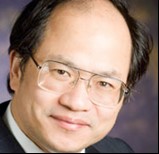RADLAB Seminar
Multiphysics Modeling in Computational Electromagnetics: Technical Challenges and Potential Solutions
Add to Google Calendar

As computational methods for solving Maxwell's equations become mature, the time has come to tackle much more challenging multiphysics problems, which have a great range of applications in sciences and technologies. In this presentation, we will use five examples to illustrate the nature and modeling of multiphysics problems. The first example is related to electromagnetic hyperthermia, which requires solving electromagnetic and bio-heat transfer equation for the planning and optimization of the treatment process. The second example concerns the heat problem in integrated circuits due to electromagnetic dissipated power, which requires an electrical-thermal co-simulation. The second example considers modeling of monolithic microwave integrated circuits, which consist of both distributive and lumped circuit components. The third is the simulation of vacuum electronic devices using the particle-in-cell method, which solves Maxwell's equations and particle kinetic equation, and the fourth example simulates the air and dielectric breakdown in high-power microwave devices by coupling electromagnetic modeling with various plasma models. With these examples, we will discuss the methodologies and some of the challenges and potential solutions in multiphysics modeling.
Jian-Ming Jin is Y. T. Lo Chair, Professor in Electrical and Computer Engineering and Director of the Electromagnetics Laboratory and Center for Computational Electromagnetics at the University of Illinois at Urbana-Champaign. He has authored and co-authored over 275 papers in refereed journals and over 20 book chapters. He has also authored The Finite Element Method in Electromagnetics, Electromagnetic Analysis and Design in Magnetic Resonance Imaging, and Theory and Computation of Electromagnetic Fields, co-authored Computation of Special Functions, Finite Element Analysis of Antennas and Arrays, and Fast and Efficient Algorithms in Computational Electromagnetics. His name often appeared in the University of Illinois's List of Excellent Instructors. He was elected by ISI among world's most cited authors in 2002. He is a Fellow of IEEE, Applied Computational Electromagnetics Society (ACES), and Electromagnetics Academy. Recently, he received the 2014 ACES Technical Achievement Award, 2015 IEEE APS Chen-To Tai Distinguished Educator Award, 2016 ACES Computational Electromagnetics Award, and 2017 IEEE APS Harrington-Mittra Computational Electromagnetics Award.
 MENU
MENU 
